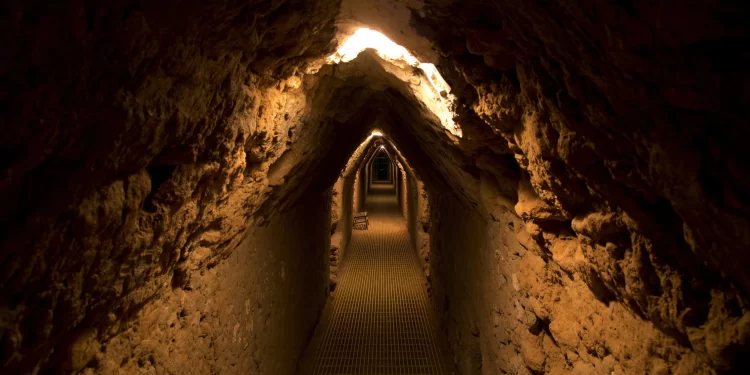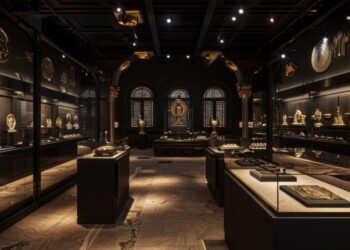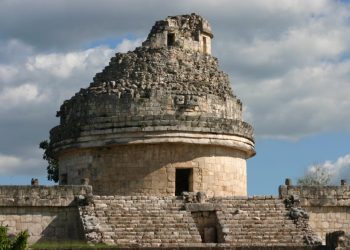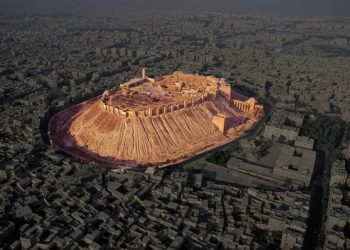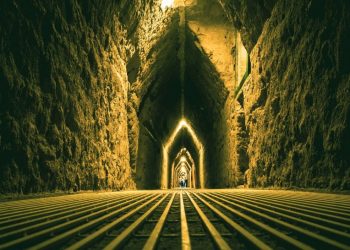In the heart of Mexico’s Puebla state, a colossal marvel of ancient architecture, the Great Pyramid of Cholula, dominates the skyline. This astonishing structure is not only the world’s largest pyramid by volume, but it is also a testament to the resilience and ingenuity of the ancient Mesoamerican cultures.
This article will explore the unique aspects that make the Great Pyramid of Cholula an exceptional archeological and historical wonder.
While Egypt’s Great Pyramid of Giza is the most famous and tallest pyramid, the Great Pyramid of Cholula outshines its Egyptian counterpart in terms of sheer size.
With a base measuring approximately 1,480 x 1,480 feet (450 x 450 meters) and standing around 180 feet (55 meters) tall, the Cholula Pyramid dwarfs the Great Pyramid of Giza, which has a base of 756 x 756 feet (230 x 230 meters) and stands at 481 feet (147 meters) tall.
The monument’s construction began around 300 BC during the Pre-Classic period and continued to be expanded and modified until the 9th century CE. The pyramid is actually a series of nested structures, each one built on top of the previous one, which contributed to its enormous size.
Think of it like a massive Matryoshka doll.
What Makes the Largest Pyramid on Earth so Unique?
The Great Pyramid of Cholula is also known as Tachihualtepetl, which means “man-made mountain” in Nahuatl. Its name reflects the fact that the pyramid was constructed to resemble a natural hill, and it is now covered in vegetation.
This unique design has allowed the monument to blend seamlessly into its surroundings and has preserved it from the ravages of time and invasion.
Cholula is a representation of the merging of two powerful Mesoamerican cultures, the Toltec and the Cholula. The pyramid’s construction reflects the influence of both cultures, as seen in the architectural styles and the religious iconography found in the temple complex.
Also, the city of Cholula was once a thriving religious and cultural center, with a population estimated to have been around 100,000 people at its peak. However, the city was abandoned by its inhabitants sometime between the 9th and 10th centuries CE. The exact cause of this sudden abandonment remains a mystery to this day.
The Role of Religion in the Great Pyramid of Cholula
At the top of the Great Pyramid of Cholula once stood a temple dedicated to the feathered serpent deity, Quetzalcoatl. This deity was a central figure in Mesoamerican religion, symbolizing wisdom, fertility, and the duality of life and death.
You can read more about Quetzalcoatl here.
The pyramid’s religious significance extended beyond the temple of Quetzalcoatl. The structure was also a site for numerous rituals and ceremonies, including human sacrifice. The remains of sacrificial victims have been discovered in and around the pyramid, providing evidence of the importance of these rituals in ancient Mesoamerican culture.
Archeological Discoveries and Ongoing Excavations
In the 1930s, archeologists began excavating the Great Pyramid of Cholula and discovered a complex network of tunnels and chambers beneath the structure. These tunnels have allowed researchers to study the various layers of the pyramid and gain insights into the different stages of its construction.
Furthermore, archeological excavations have also revealed numerous murals and artifacts that offer a glimpse into ancient Mesoamerican civilizations’ religious and cultural practices. These discoveries have shed light on the various architectural styles and the diverse pantheon of gods that were worshipped in the region.
Excavations at the Great Pyramid of Cholula continue today, with researchers uncovering new finds and working to preserve the site for future generations. The pyramid has been designated a UNESCO World Heritage Site, ensuring its protection and continued study.



